Hi there! We'd love to hear from you... please add your comments below the articles...
-
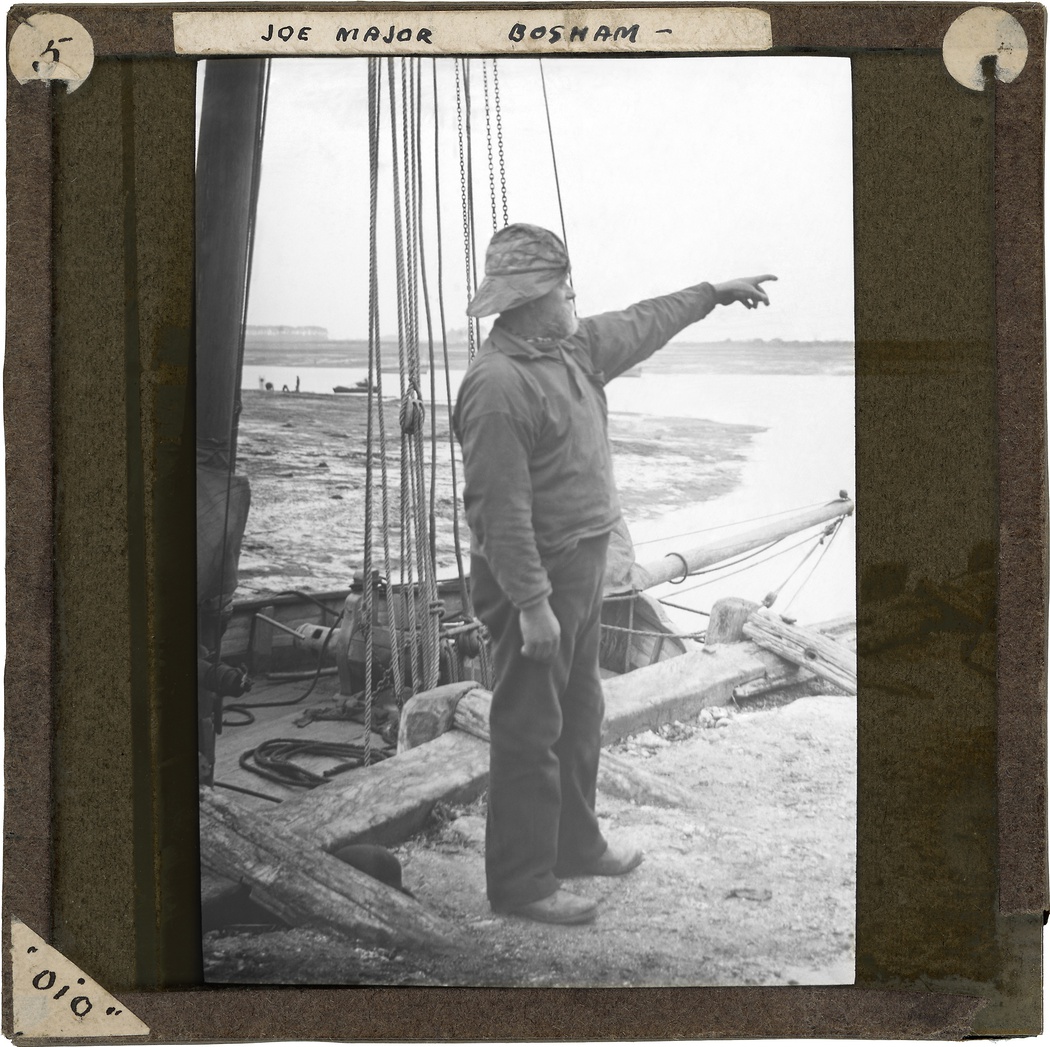
-
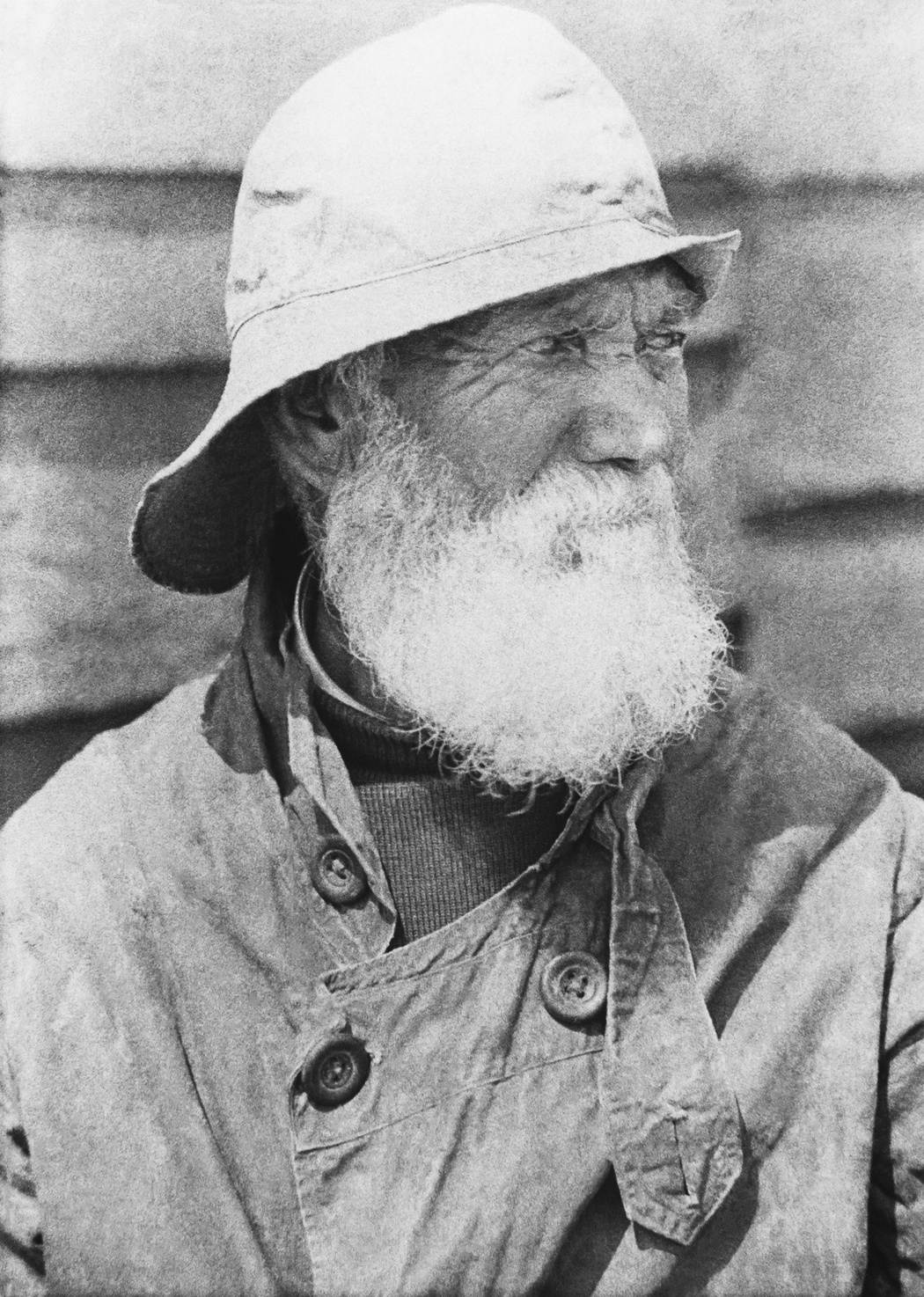 Oyster Fisherman, Bosham, England c1900
Oyster Fisherman, Bosham, England c1900 -
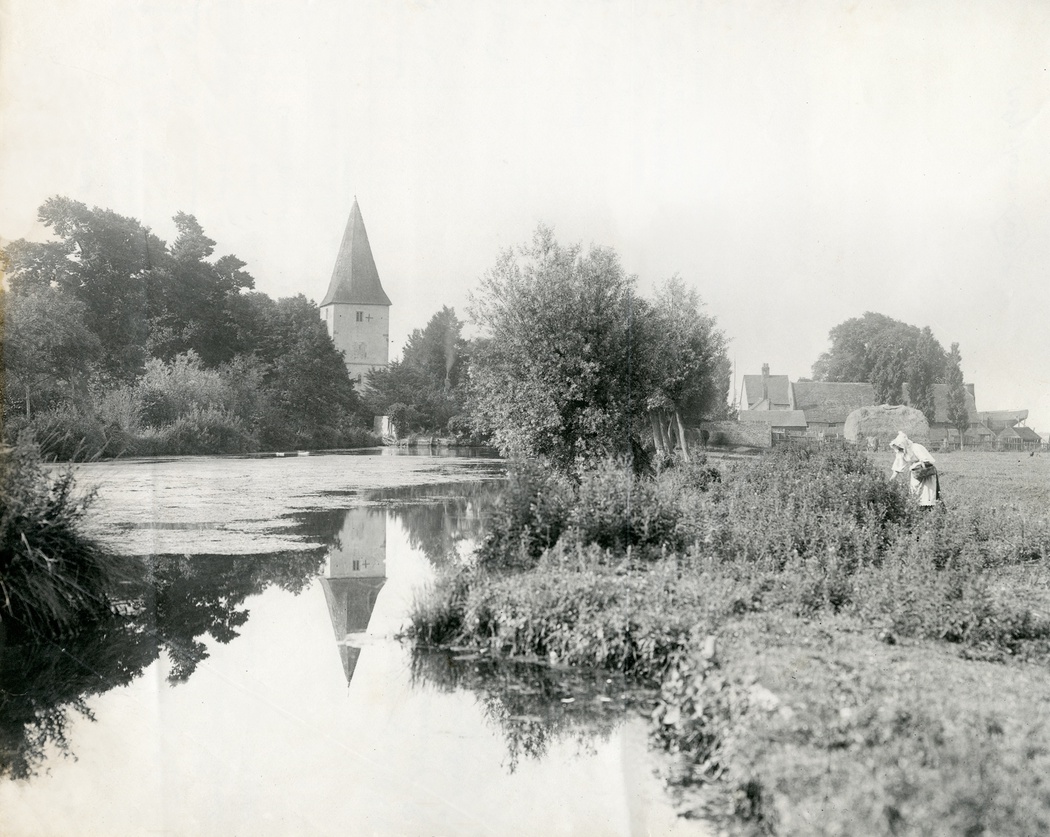 Photograph of view at Bosham, church in background, water in foreground, 1896I still enjoy collecting old photographs of Bosham and thought you might be interested to see two recent additions to my archive below, which I have licensed from the National Archives in Kew for a book of Bosham photographs, and am slowly compiling. The two prints were originally deposited into the National Archives in December 1896, and I have included the copyright entries that I was sent by their Image Library Manager for your interest too...
Photograph of view at Bosham, church in background, water in foreground, 1896I still enjoy collecting old photographs of Bosham and thought you might be interested to see two recent additions to my archive below, which I have licensed from the National Archives in Kew for a book of Bosham photographs, and am slowly compiling. The two prints were originally deposited into the National Archives in December 1896, and I have included the copyright entries that I was sent by their Image Library Manager for your interest too... -
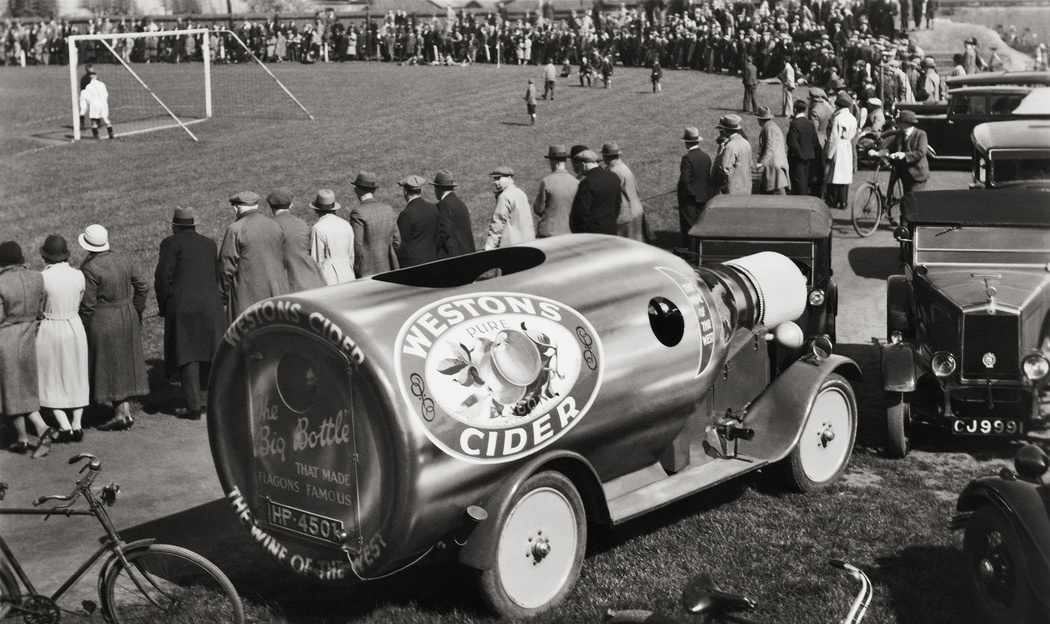 I have recently finished setting up a significant photography archive for Westons Cider in Much Marcle, Herefordshire and I thought you might enjoy seeing a few of the photographs...
I have recently finished setting up a significant photography archive for Westons Cider in Much Marcle, Herefordshire and I thought you might enjoy seeing a few of the photographs... -
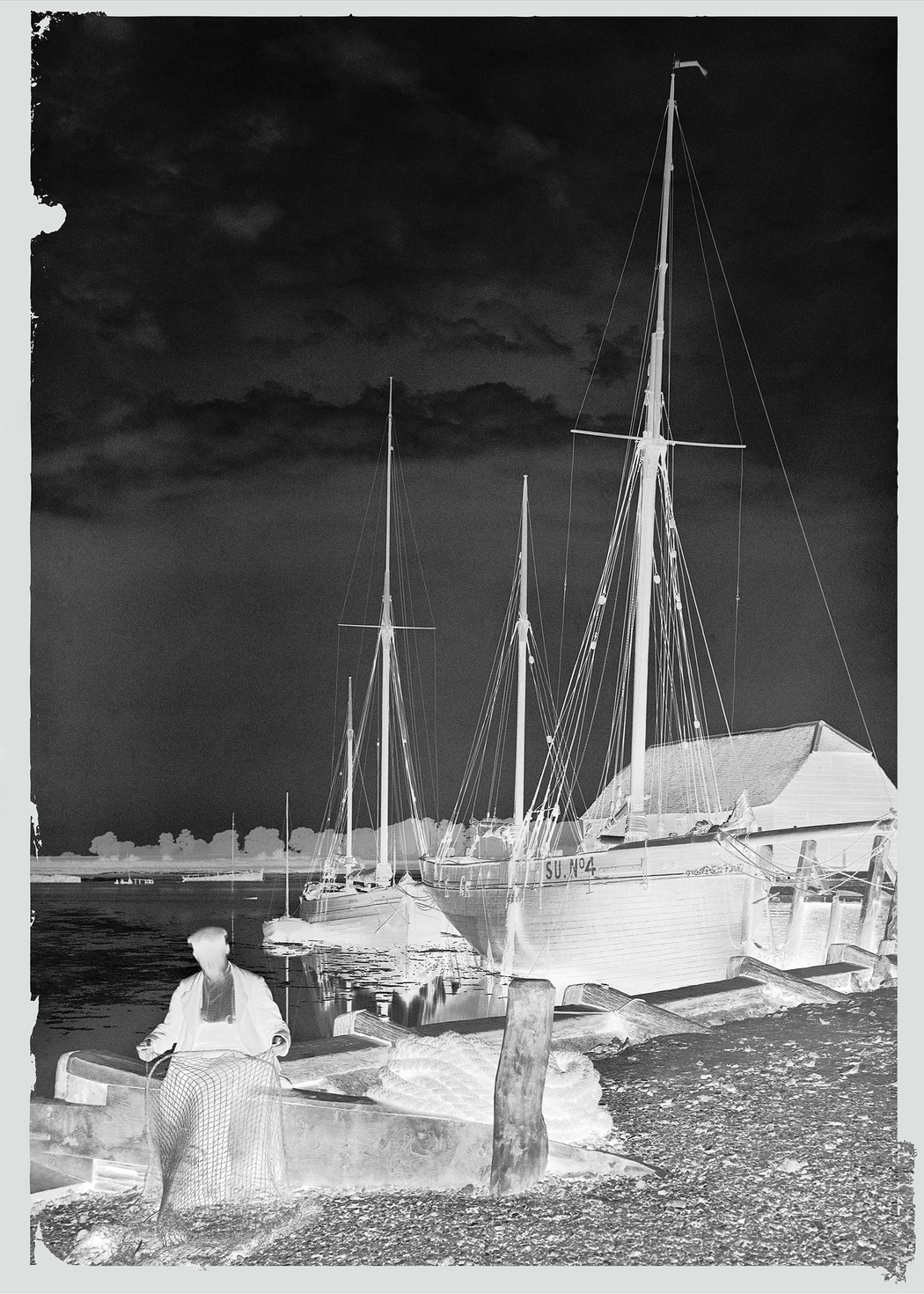 A glass plate negative of a photograph titled 'Fisherman Mending Nets, Bosham, Sussex, England 1890' followed by the inverted scan...
A glass plate negative of a photograph titled 'Fisherman Mending Nets, Bosham, Sussex, England 1890' followed by the inverted scan... -
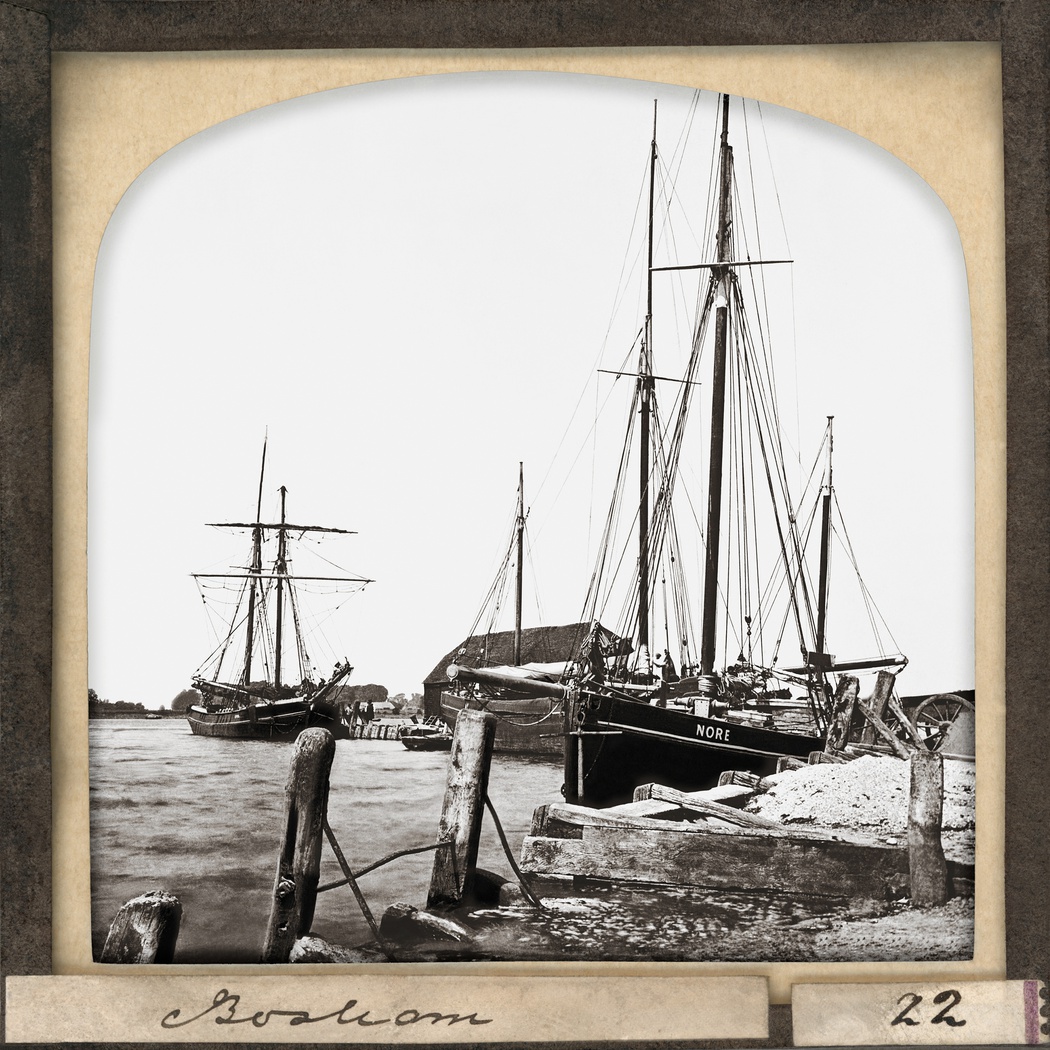 A 19th century magic lantern slide photograph of Bosham...
A 19th century magic lantern slide photograph of Bosham... -
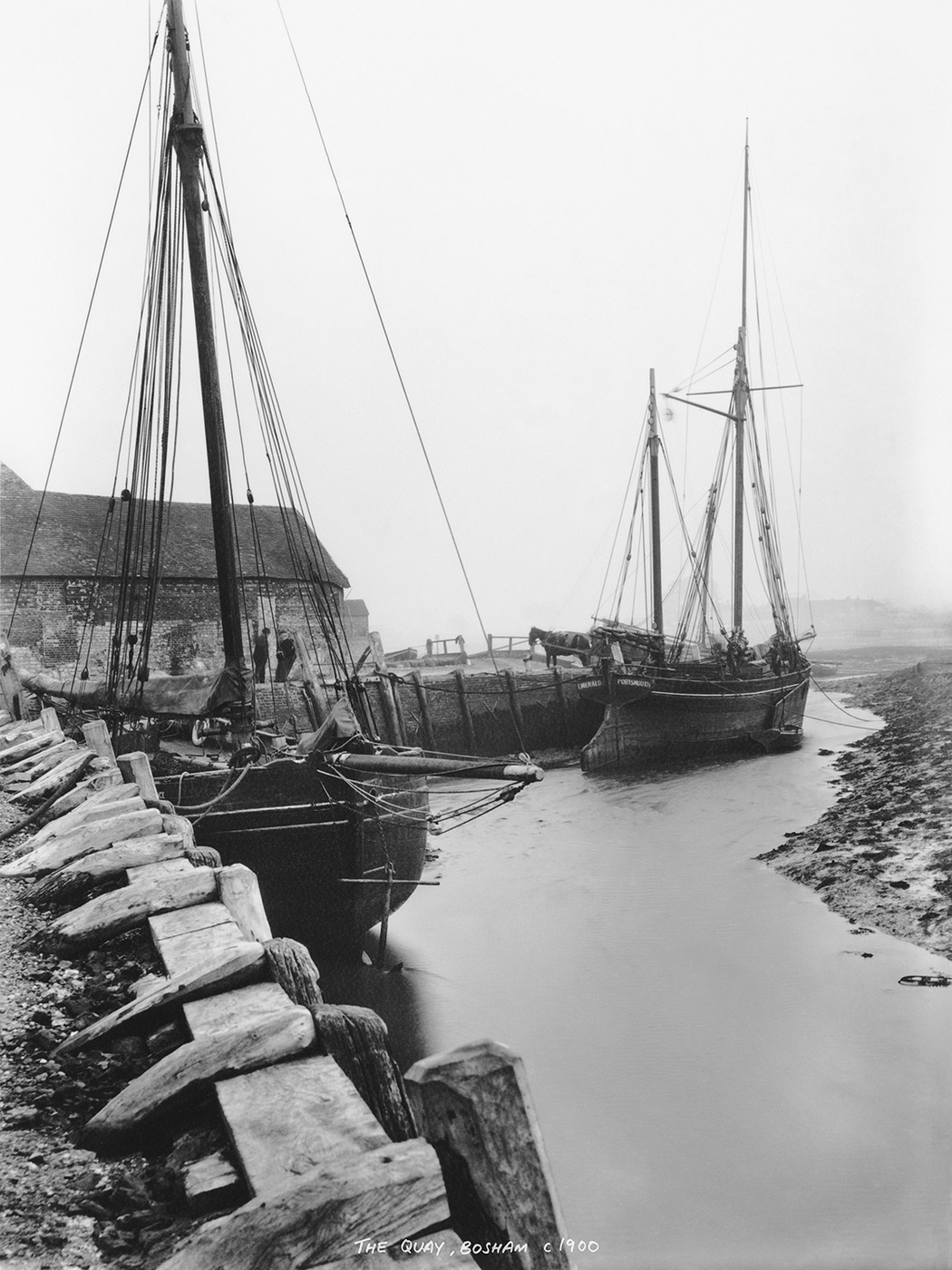 The Quay, Bosham, Sussex, England c1900
The Quay, Bosham, Sussex, England c1900Bosham's Sea Trade In The 19th Century
Archive Reference: BMA097Longer read...
Prior to 1900, Bosham had been a thriving commercial port for freight transport along Britain's coastline for over 300 years. This photograph captures two trading ketches tied to Bosham Quay being unloaded by horse and cart at low tide. On the left, two mariners can be seen leaning against the oak piles of the Quay, chatting.
-
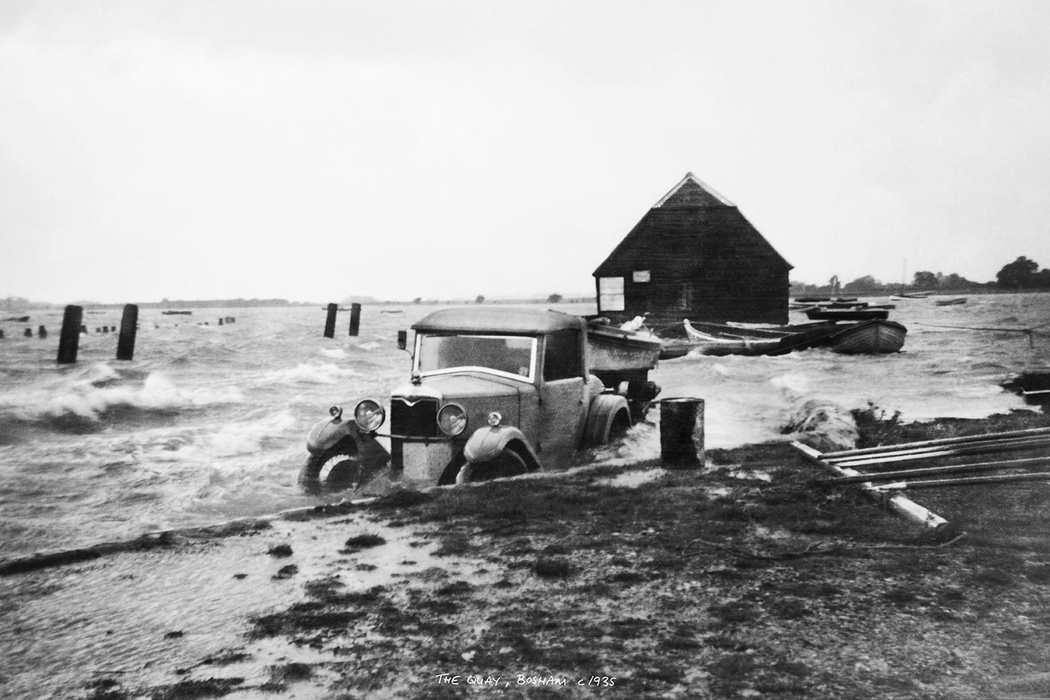 The Quay, Bosham, Sussex 1935
The Quay, Bosham, Sussex 1935Caught By The Tide, Bosham, Sussex, England 1935
Archive Reference: BGA1817Bosham Sailing Club is the oldest sailing club in Chichester Harbour and was formed in 1907. It wasn’t until after World War I that other clubs were established within the harbour and since then, the harbour has mainly been used for recreational and competitive sailing. What was once a busy, working Quay for Bosham’s fishermen and mariners, with customs tolls payable to the Lord of The Manor of Bosham, has since been used to launch and keep sailing boats that are raced in the harbour, or tenders that are used to row out to the deep-sea moorings.
-
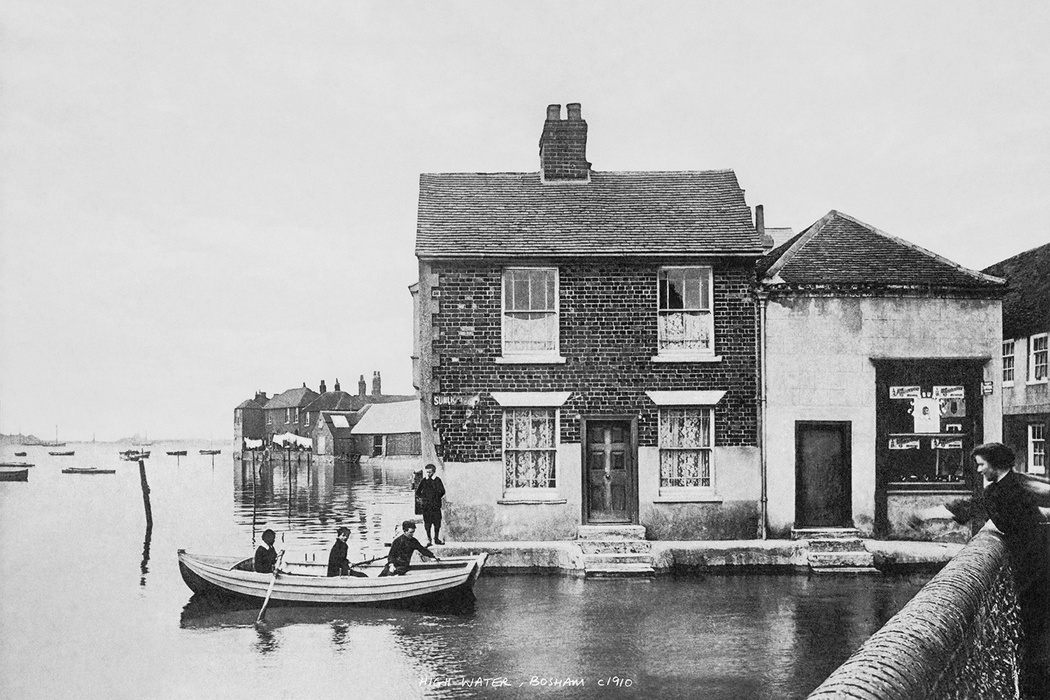 High Water, Bosham, Sussex, England c1910
High Water, Bosham, Sussex, England c1910High Water, Bosham, Sussex, England c1910
Archive Reference: BGA1902The tide comes right into the village at Bosham. During a high spring tide, the sea covers the road at Street End, and rises up Bosham Lane and into the High Street. At the peak of the incoming tide, the village is entirely transformed as it looks as though Bosham stands on the borders of some great lake, with the old cottages along the High Street appearing to float on the water. The tide rises right up their front walls, shimmering and reflecting in the sea with countless subtle patterns and colours, and waves lapping under their windows. -
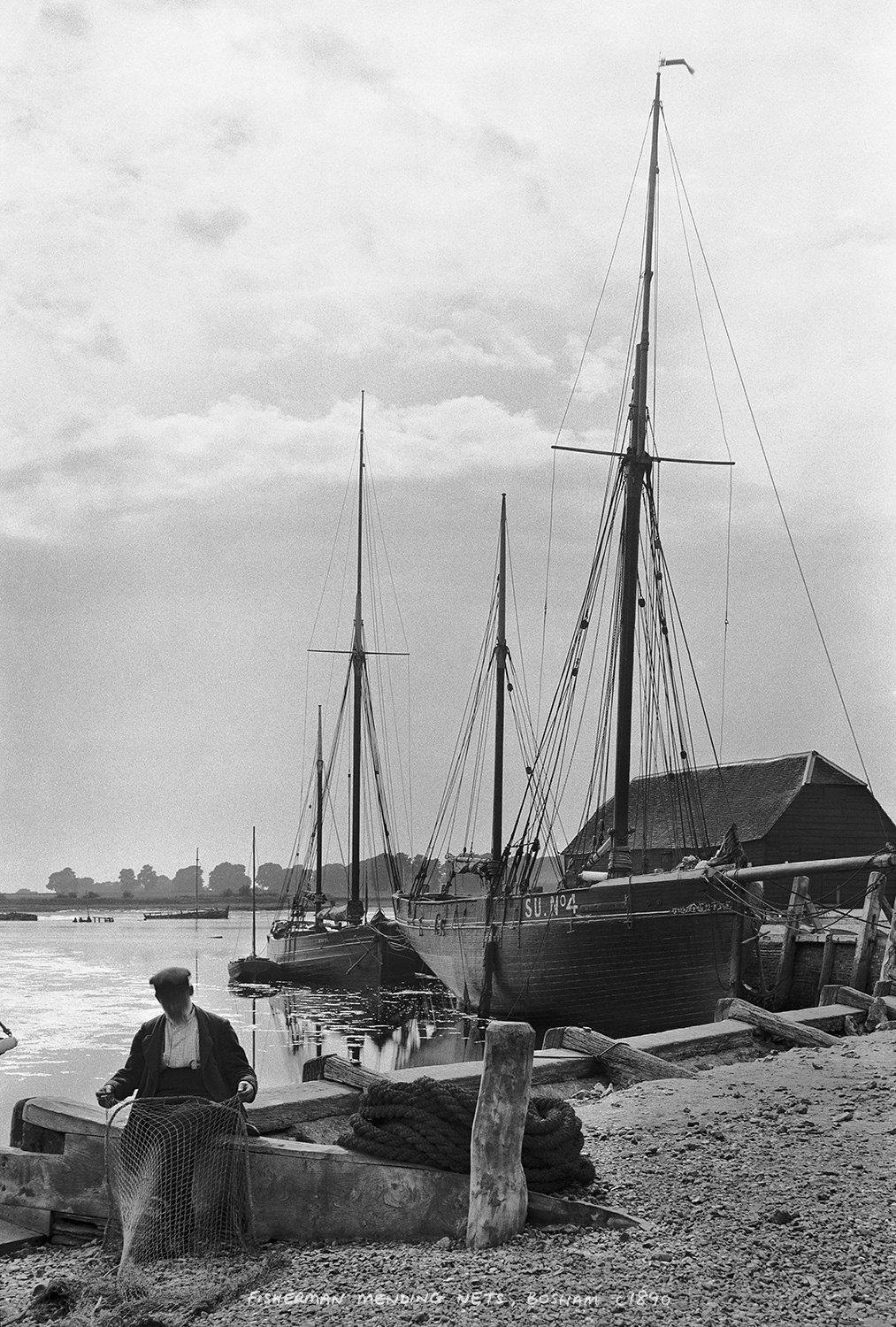 Fisherman Mending Nets, Bosham, Sussex c1890
Fisherman Mending Nets, Bosham, Sussex c1890Bosham's Fishing Fleet In The 19th Century
Archive Reference: BGA3321Longer read...
Bosham’s fishing industry enjoyed a boom in the second half of the nineteenth century. The arrival of the railways in 1846 allowed the fishermen to expand their markets, and Bosham’s boatbuilders began to build larger fishing boats that could stay at sea longer, and hold larger cargoes of fish. Young oysters were dredged up in the shallow waters of the English Channel and off the French coast, and left to mature in nursery beds within Chichester Harbour. Scallops were dredged up in deeper waters (below 25 feet) of the English Channel, where herring, mullet, crab and bass could also be fished with ease. Mackerel, shrimp, and cockles were in plentiful supply in Chichester Harbour, and Bosham’s fishing fleet sailed to Shoreham to fish for mussels, and to the North Sea for cod.
-
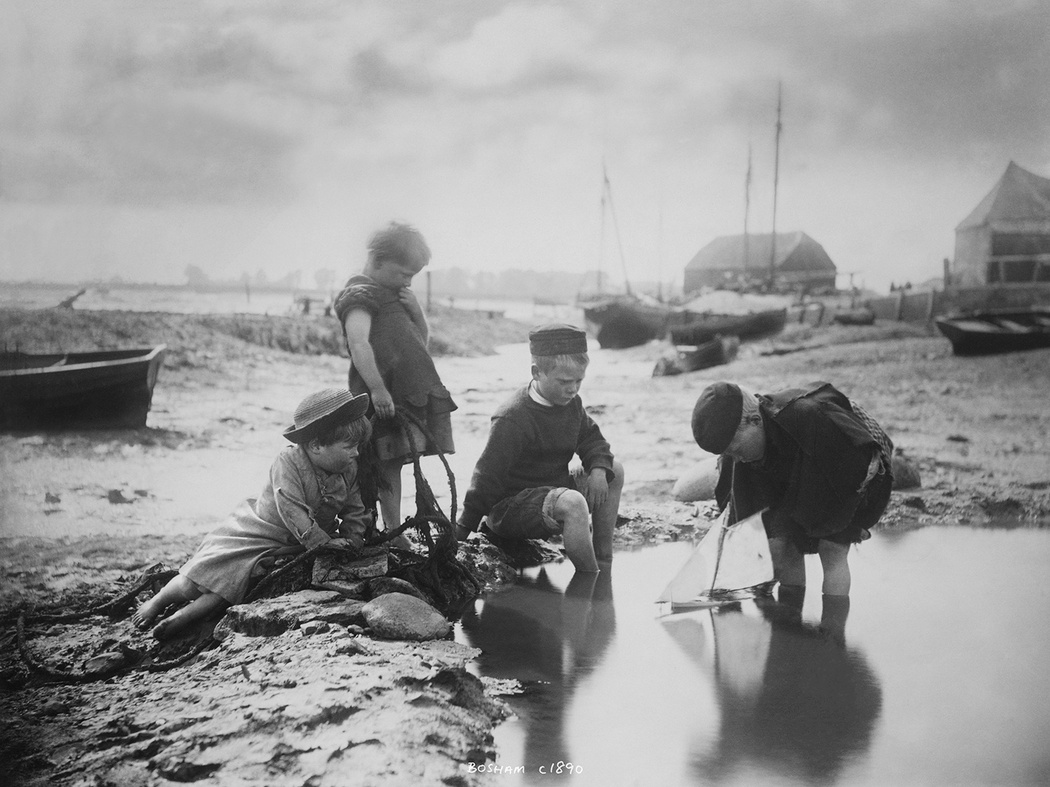 Bosham c1890
Bosham c1890 -
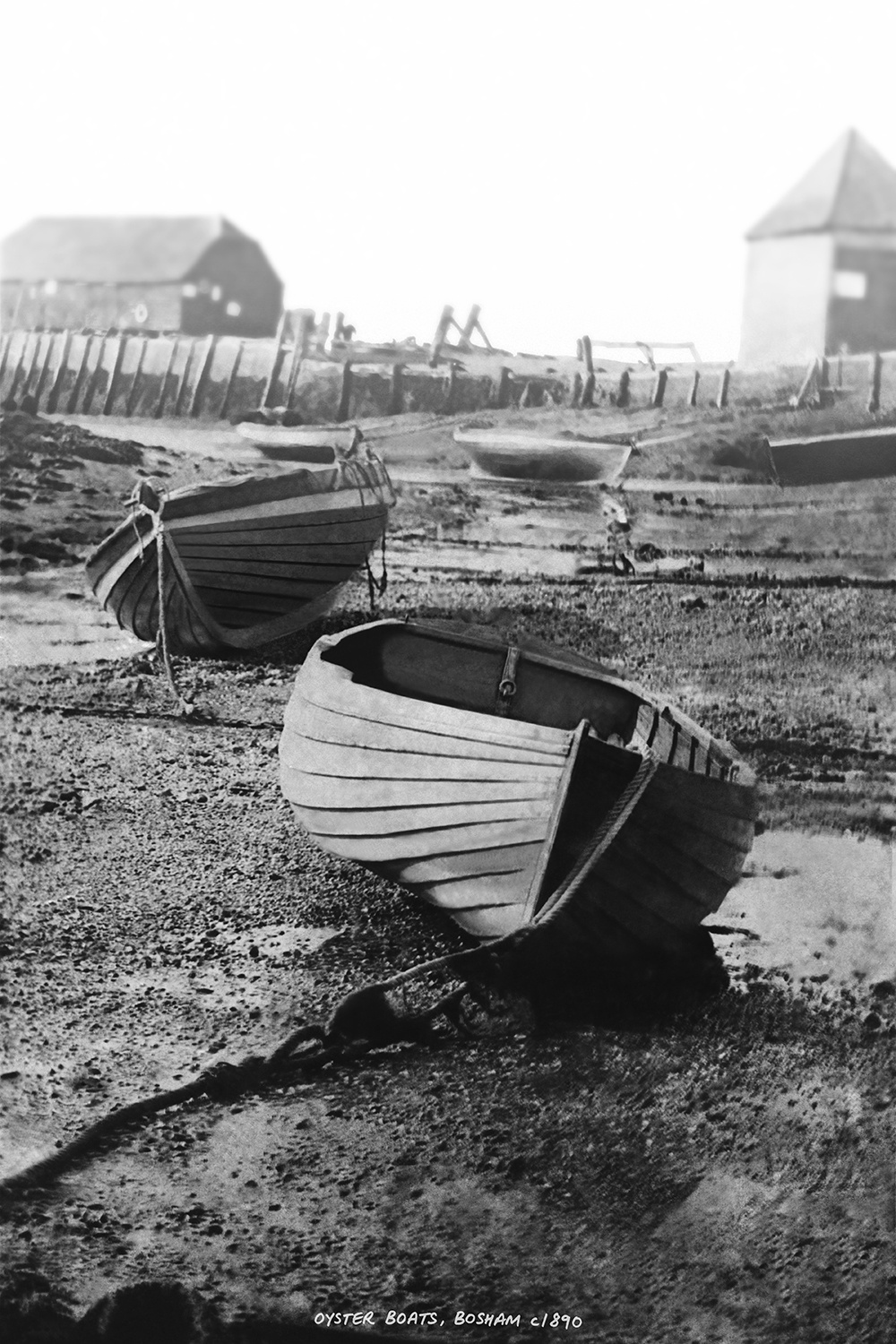 Oyster Boats, Bosham, Sussex, England c1890
Oyster Boats, Bosham, Sussex, England c1890Emsworth & Bosham's Oyster Ponds In The 19th Century
Archive Reference: BGA1652Longer read...
At the end of the nineteenth century, Bosham's oyster fishery was booming, and there was a huge demand for oysters in London, where it is estimated that a staggering 144 million were sold each year. The oyster ponds were located along the foreshore of Bosham's two creeks, either side of the Quay. The oysters needed a great deal of care to protect them from growing over each other, and smothering the smaller ones, which caused suffocation, and the fishermen would continually walk or row out to the ponds to monitor their growth. They were constantly sorting and grading them, and removing mud and seaweed from the ponds, which could also suffocate them.
Bosham's oyster boats, pictured here, were built in the village. They were wide rowing boats with low sides to allow the fishermen to easily dredge and use a net. A cross between a fork and a rake was used to scoop the oysters out of the ponds, into buckets or bags. They were brought ashore and packed into baskets and taken by horse and cart to the railway station, one mile to the north. The majority of Bosham's oysters were sold in fish markets in Portsmouth, Southampton, Brighton, Winchester, Hove, Guildford and various boroughs of London.
As well as using these rowing boats to manage the oyster ponds, fishermen would have used them to fish for shrimp in shallow waters within Bosham's creeks.
-
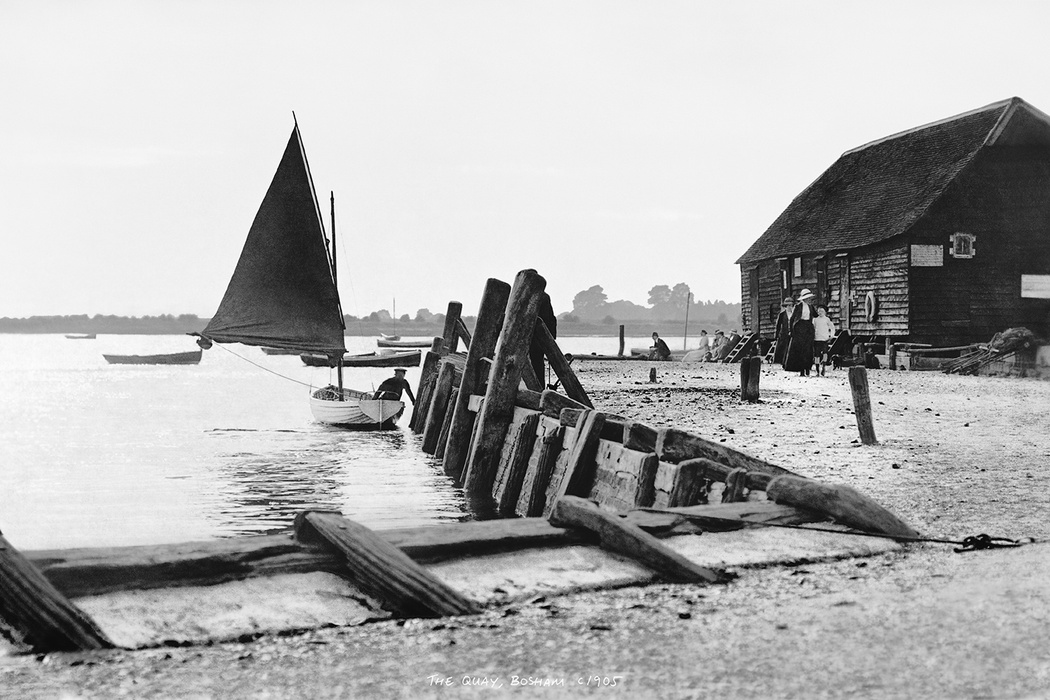 The Quay, Bosham, Sussex, England c1905
The Quay, Bosham, Sussex, England c1905Chichester Harbour's Booming Oyster Industry In The 19th Century
Archive Reference: BGA820Longer read...
Perhaps the most interesting passage of Chichester Harbour's oyster history is the story of the fishery during the nineteenth century when we saw the emergence of oyster merchants such as James Duncan Foster in Emsworth and William Yetman in Bosham, who established an early form of factory farm fishing to take advantage of the arrival of the railways in 1846, which significantly expanded markets for local fishermen, and shortened delivery times dramatically. Their fishing fleets built much larger oyster boats that could stay at sea longer and carry larger cargoes of fish, and produced better quality oysters by using oyster ponds to manage their growth and allow the oysters to cleanse before they were sent to market. By the end of the nineteenth century, oysters had been elevated from a subsistence food for the lower classes to a prized delicacy of the upper classes. The story of Chichester Harbour's oysters through the centuries is fascinating...